Heading out the door? Read this article on the new Outside+ app available now on iOS devices for members! Download the app.
If you tend to use whatever attachment is currently on the cable machine, you’re missing out on a whole heap of exercise variety. We’re introducing you to seven of the usual suspects, and giving you the lowdown on what they are, how to use them, and why the heck you should give them a try.
What’s With My Grip?
Neutral grip: Palms facing each other (when forearms are parallel to the ground, shown); facing the sides of your body (when arms are extended)
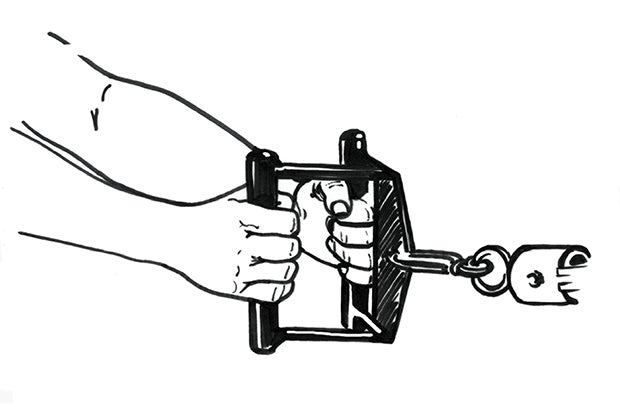
Underhand grip: Palms facing the ceiling (when forearms are parallel to the ground); facing behind you (when arms are extended overhead)
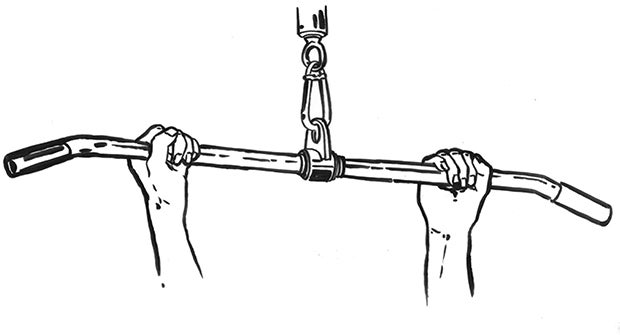
Overhand grip: Palms facing the floor (when forearms are parallel to the ground); facing forward (when arms are extended overhead, shown)
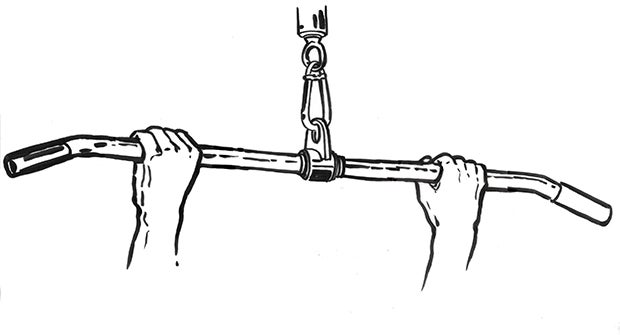
5 Reasons To Get Attached
1. Attachments can hit your muscles from a variety of angles to provide extra stimulation.
2. Cable machines offer constant tension, giving standard free-weight moves (i.e. biceps curls) a new twist and feel.
3. Having a list of alternative moves in your arsenal is key during peak hours at the gym.
4. Supersets and drop sets are easy with cables. (Try cambered bar biceps curls paired with cambered bar overhead triceps extensions.)
5. You can perform multiple exercises with most attachments – without ever moving from your spot.
Rope

What is it? A nylon rope with two knotted or plasticized ends that runs through a metal cuff.
Why use it? Since the rope is flexible, you can spread your hands apart or bring them together to create new tension in the muscles – something you can’t do with fixed attachments or barbells.
Muscles used most: biceps, triceps, shoulders, traps, abs, back
Low-Pulley Moves:Hammer biceps curls (neutral grip), Upright rows (overhand grip), Overhead triceps extension (neutral grip), Two-arm row (neutral grip)
High-Pulley Moves: Triceps pressdown (neutral grip), Kneeling crunches (neutral grip), Standing lat pulldown (neutral grip)
Other Uses/Notes:
• Try holding both ends of the rope in one hand to make a one-handed attachment. • Do overhead one-arm triceps extensions, one-arm rows and one-arm hammer curls.
V-Bar

What is it? A V-shaped metal handle.
Why should I use it? The fixed spacing of the attachment helps target the triceps and biceps evenly on both sides of the body. It also targets the forearm muscles, which will in turn strengthen your grip.
Muscles used most: biceps, triceps, back, abs
Low-Pulley Moves: Biceps curls (neutral grip), Overhead triceps extensions (neutral grip)
High-Pulley Moves: Triceps pressdowns (neutral grip), Kneeling crunches (neutral grip)
Other Uses/Notes:
• Do a close-grip pulldown by attaching to a seated overhead cable station.
V-Handle
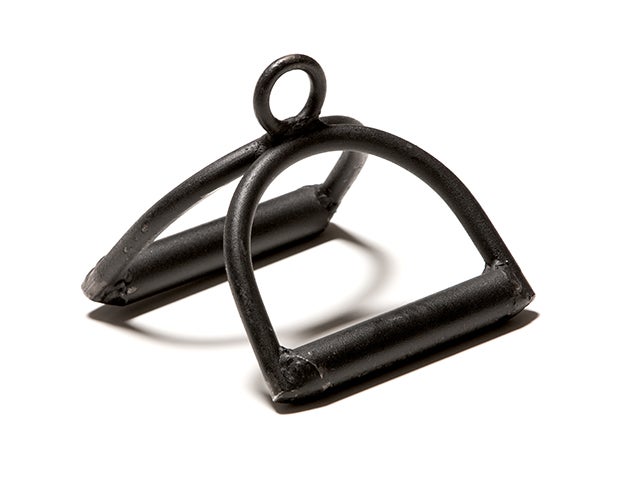
What is it? A solid metal handle that resembles an upside-down “V” or a tent.
Why should I use it? It offers a neutral grip, which is not available with barbells and other straight-bar attachments, to target different muscles in the back and arms.
Muscles used most: back (including traps and rhomboids), forearms
Seated Moves: Seated rows (neutral grip)
High-Pulley Moves: Close-grip pulldowns (neutral grip)
Other Uses/Notes:
• Place overtop a pull-up bar and do close-grip pull-ups.
• Secure underneath an Olympic bar loaded at one end and use for bent-over rows.
Short Straight Bar
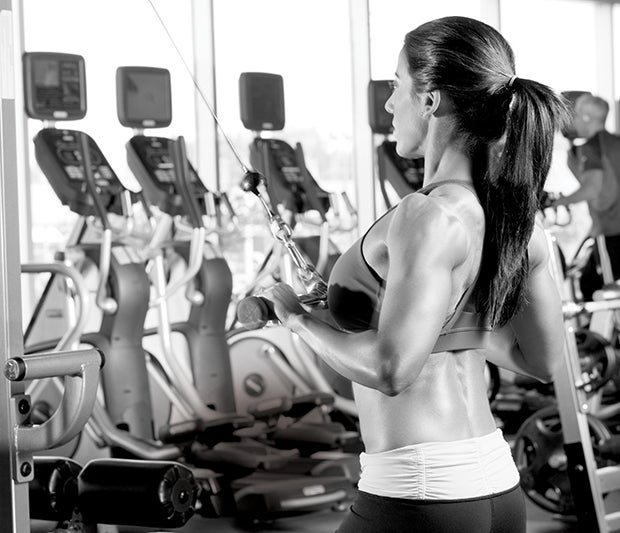
What is it? A straight metal bar about one to two feet long.
Why should I use it? This versatile attachment can be used instead of a barbell or dumbbells during many familiar exercises.
Muscles used most: biceps, triceps, shoulders, traps, back
Low-Pulley Moves: Standing biceps curl (underhand grip), Upright row (overhand grip), Lying triceps extension (overhand grip), Standing overhead triceps extension (overhand grip), Two-handed front shoulder raise (overhand grip)
High-Pulley Moves: High rows (overhand grip), Reverse-grip triceps pressdown (underhand grip), Straight-arm lat pulldown (overhand grip), Triceps Pressdown (overhand grip)
Other Uses/Notes:
• Attach to the seated row machine for an alternative to standard rowing.
• Attach to the lower pulley and hold as you perform squats.
Cambered Bar
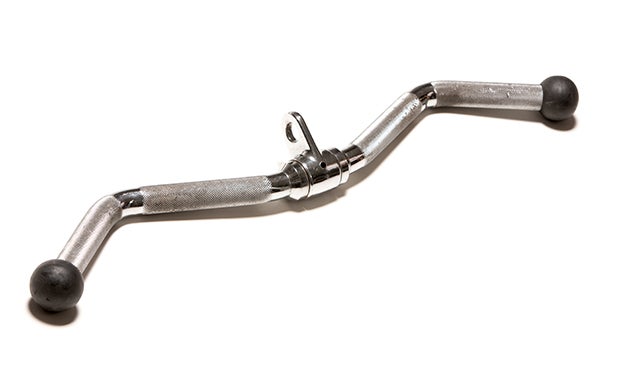
What is it? A two- to three-foot bar with several bends on each side.
Why use it? The variety of bends in the bar creates different gripping angles, offering more variety than standard straight bars and machines.
Muscles used most: biceps, triceps, shoulders, traps
Low-Pulley Moves: Narrow-grip biceps curls (underhand grip), Upright rows (overhand grip), Lying triceps extensions (overhand grip)
High-Pulley Moves: Triceps pressdowns (overhand grip), Reverse-grip triceps pressdowns (underhand grip)
Other Uses/Notes:
• Drag a preacher bench to the cable station and use on the low pulley to target the lower biceps.
Pulldown Bar
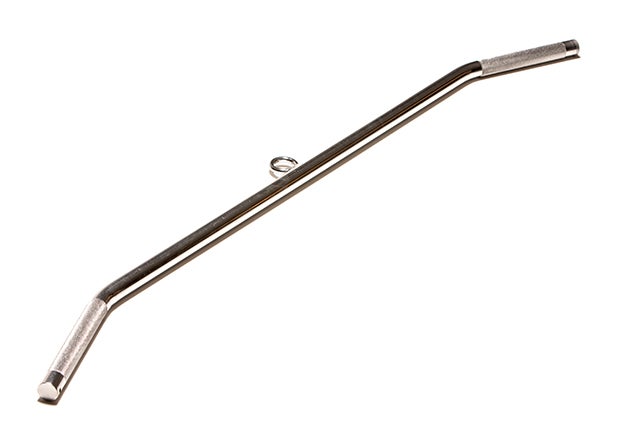
What is it? A three- to four-foot long straight bar angled slightly downward at the ends.
Why use it? Long bars target your outermost back muscles – the lats – which are hard to hit with regular free weights.
Muscles used most: back (lats and rhomboids)
Seated Moves: Wide-grip seated row (overhand grip)
High-Pulley Moves: Wide-grip pulldowns (overhand grip)
Other Uses/Notes:
• Standing straight-arm pulldowns (using a shoulder-width, overhand grip)
D-Handle

What is it? A single-hand D-shaped metal handle. (Also comes in soft foam and nylon versions.)
Why should I use it? They are a great alternative to dumbbells for those craving workout variety, and using one arm at a time helps identify weaknesses and correct imbalances.
Muscles used most: biceps, triceps, shoulders, back, obliques, abs
Low-Pulley Moves: One-arm row (neutral grip), Concentration Curl (underhand grip), One-arm biceps curl (underhand grip), Low-to-high woodchoppers (held with both hands), Standing lateral shoulder raise (neutral grip), Standing shoulder front raise (overhand grip)
High-Pulley Moves: One-arm triceps pressdown (overhand grip), One-arm reverse-grip triceps pressdown (underhand grip), Standing oblique crunches (neutral grip), One-arm lat pulldown (overhand grip), High rear-delt row (overhand grip), High-to-low woodchoppers
Other Uses/Notes:
• If your cable machine has a center pulley, grip a D-handle with both hands and rotate through your waist, away from the weight stack.
• Attach to the seated row machine to single out each side of your back.